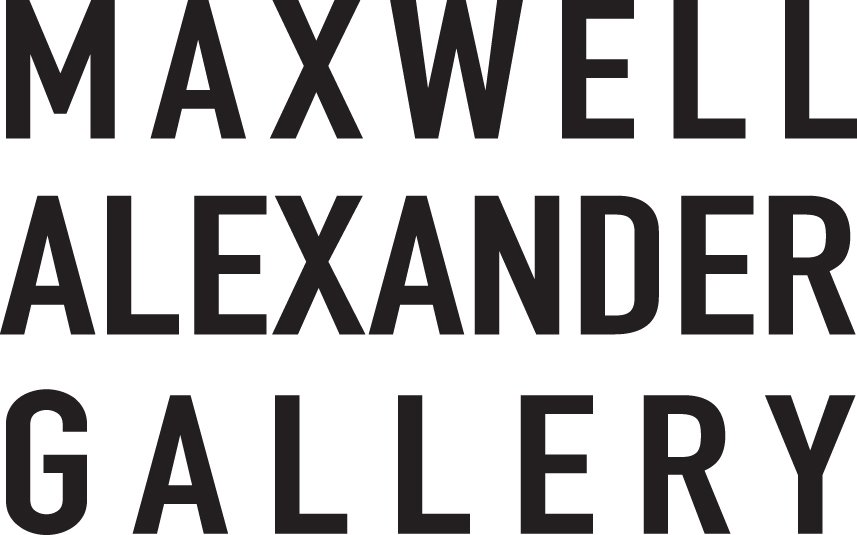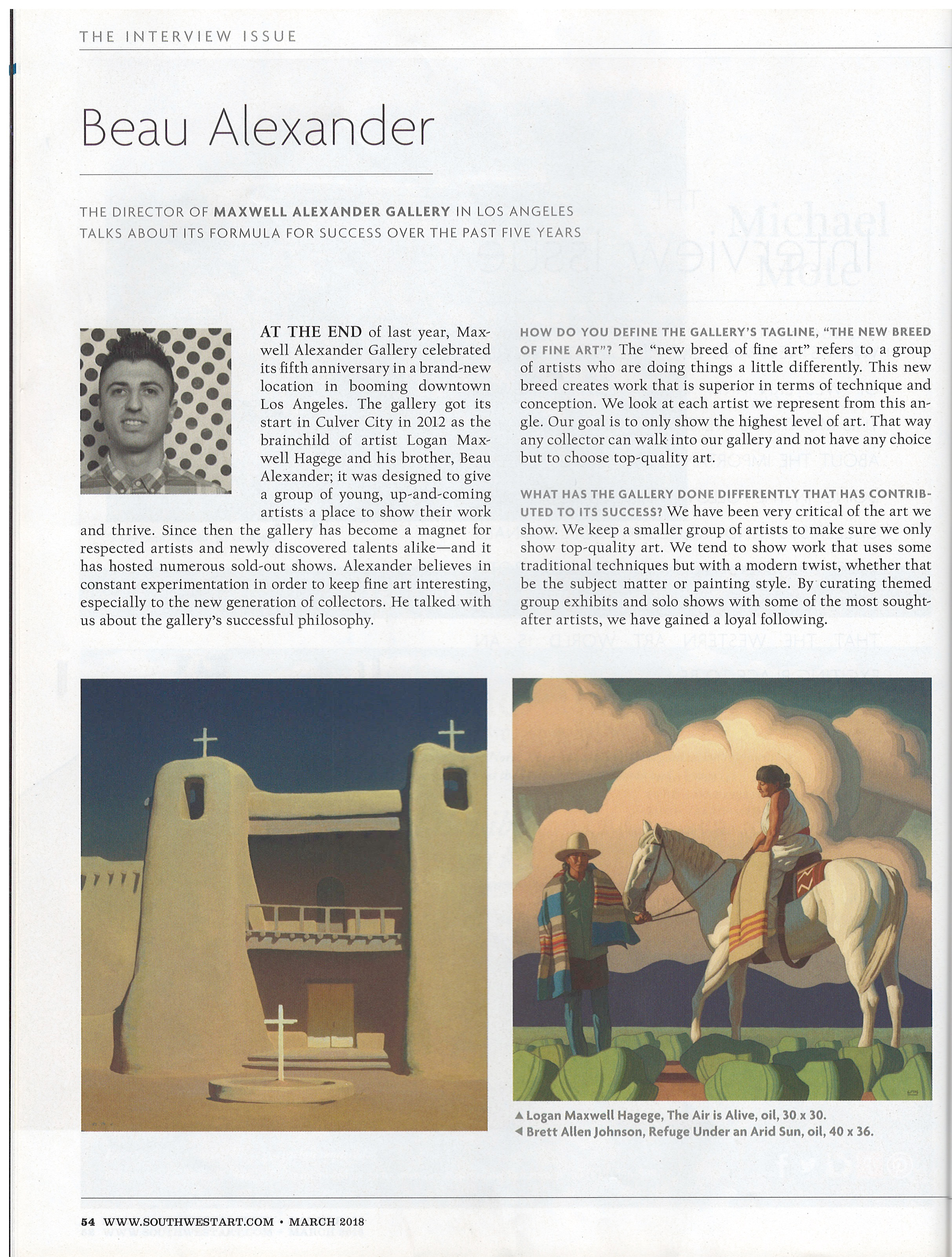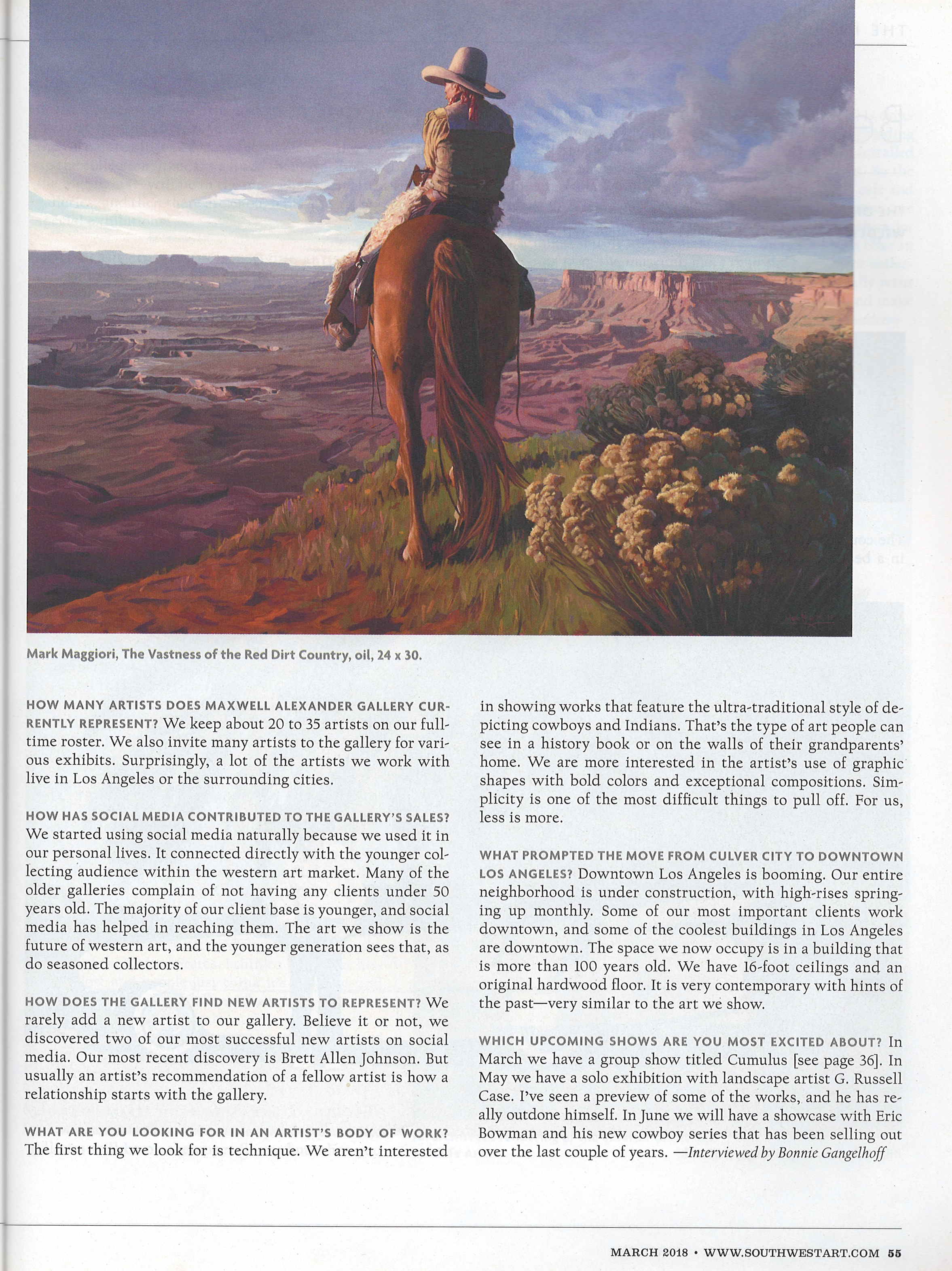For Maxwell Alexander Gallery's Five Year Anniversary, Southwest Art interviews owner and co-founder Beau Alexander on the gallery's continued success.
At the end of last year, Maxwell Alexander Gallery celebrated its fifth anniversary in a brand-new location in booming downtown Los Angeles. The gallery got its start in Culver City in 2012 as the brainchild of artist Logan Maxwell Hagege and his brother, Beau Alexander; it was designed to give a group of young, up-and-coming artists a place to show their work and thrive. Since then the gallery has become a magnet for respected artists and newly discovered talents alike—and it has hosted numerous sold-out shows. Alexander believes in constant experimentation in order to keep fine art interesting, especially to the new generation of collectors. He talked with us about the gallery’s successful philosophy.
How do you define the gallery’s tagline, “the new breed of fine art”? The “new breed of fine art” refers to a group of artists who are doing things a little differently. This new breed creates work that is superior in terms of technique and conception. We look at each artist we represent from this angle. Our goal is to only show the highest level of art. That way any collector can walk into our gallery and not have any choice but to choose top-quality art.
What has the gallery done differently that has contributed to its success? We have been very critical of the art we show. We keep a smaller group of artists to make sure we only show top-quality art. We tend to show work that uses some traditional techniques but with a modern twist, whether that be the subject matter or painting style. By curating themed group exhibits and solo shows with some of the most sought-after artists, we have gained a loyal following.
How many artists does Maxwell Alexander Gallery currently represent? We keep about 20 to 35 artists on our full-time roster. We also invite many artists to the gallery for various exhibits. Surprisingly, a lot of the artists we work with live in Los Angeles or the surrounding cities.
How has social media contributed to the gallery’s sales? We started using social media naturally because we used it in our personal lives. It connected directly with the younger collecting audience within the western art market. Many of the older galleries complain of not having any clients under 50 years old. The majority of our client base is younger, and social media has helped in reaching them. The art we show is the future of western art, and the younger generation sees that, as do seasoned collectors.
How does the gallery find new artists to represent? We rarely add a new artist to our gallery. Believe it or not, we discovered two of our most successful new artists on social media. Our most recent discovery is Brett Allen Johnson. But usually an artist’s recommendation of a fellow artist is how a relationship starts with the gallery.
What are you looking for in an artist’s body of work? The first thing we look for is technique. We aren’t interested in showing works that feature the ultra-traditional style of depicting cowboys and Indians. That’s the type of art people can see in a history book or on the walls of their grandparents’ home. We are more interested in the artist’s use of graphic shapes with bold colors and exceptional compositions. Simplicity is one of the most difficult things to pull off. For us, less is more.
What prompted the move from Culver City to downtown Los Angeles? Downtown Los Angeles is booming. Our entire neighborhood is under construction, with high-rises springing up monthly. Some of our most important clients work downtown, and some of the coolest buildings in Los Angeles are downtown. The space we now occupy is in a building that is more than 100 years old. We have 16-foot ceilings and an original hardwood floor. It is very contemporary with hints of the past—very similar to the art we show.
Which upcoming shows are you most excited about? In March we have a group show titled Cumulus [see page 36]. In May we have a solo exhibition with landscape artist G. Russell Case. I’ve seen a preview of some of the works, and he has re-
ally outdone himself. In June we will have a showcase with Eric Bowman and his new cowboy series that has been selling out over the last couple of years. —Interviewed by Bonnie Gangelhoff



